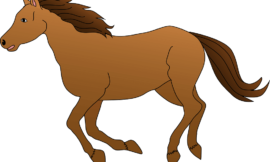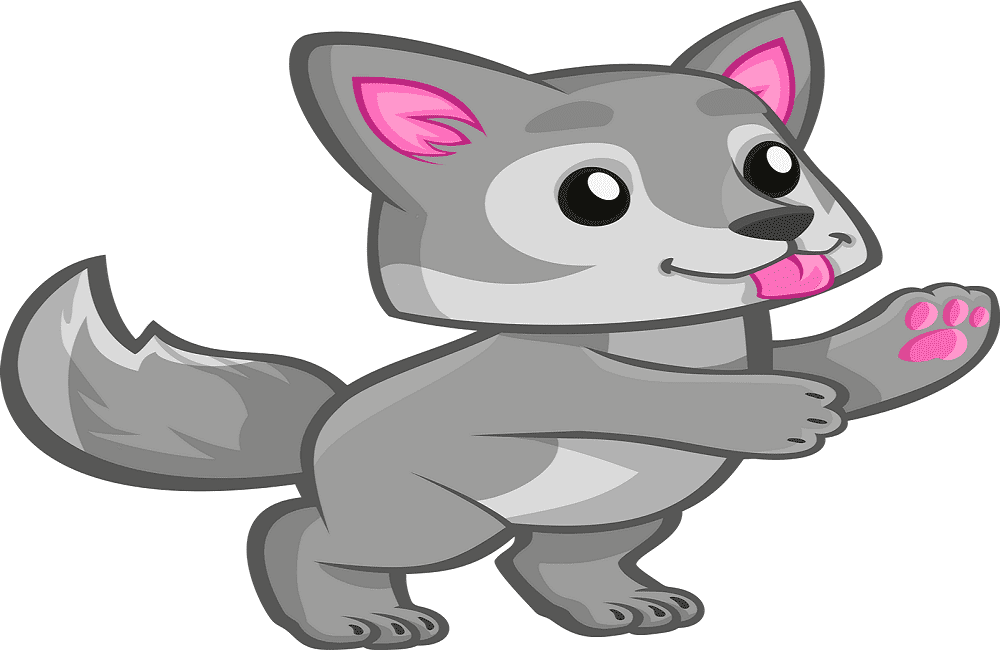

hi kids! Hope you are doing well and enjoying the fall. At this time of year, the forest is filled with different shades of color. Fall is also the season when wolf packs are mature enough to roam the habitat with adults. Our coloring page today is about the wild animal – the wolf – that has inspired several works of art, including Rudyard Kipling’s The Jungle Book. So let’s take a look at our free printable wolf coloring pages.
Wolves, also known as gray wolves, are mammals belonging to the family Canidae. Members of this family, which includes dogs, foxes, and coyotes, are known as canids. With a heavier and larger body, including a muscular neck, wolves are the largest of all canine species. They also have longer legs, which help them adapt to and walk in snow. Let’s learn more about them with this fun and informative set of wolf coloring pages.
25 Printable Free Wolf Coloring Pages
-
Accra – Mowgli’s mentor in The Jungle Book:
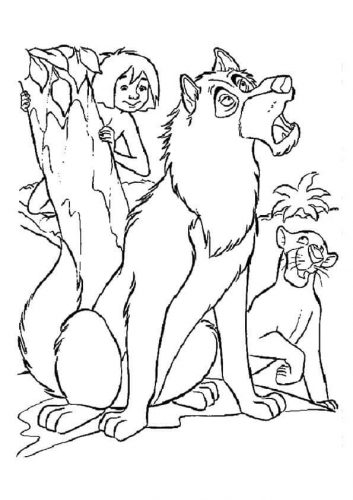



Akra or the Lone Wolf is the leader of the pack of wolves in India and appears in one of Rudyard Kipling’s most acclaimed stories, The Jungle Book and The Jungle Book II . He is the mentor to Mowgli, a lost child the wolves found in the jungle and decided to adopt.
-
Angry wolf in battle mode:
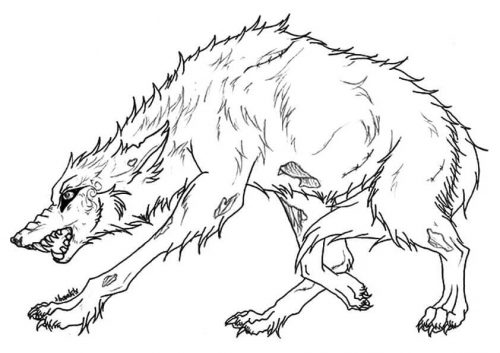



You can easily tell this is a very angry wolf – ears back, teeth showing, snarling, fur bristling, ready to pounce. Give this illustration some vibrant colors.
-
Anime Wolf:




Now let’s look at the softer side of the wolf. Almost looking like royalty, here’s an illustration of a wolf standing tall in its anime form, a Japanese form of animation.
-
Fair as an arctic wolf:
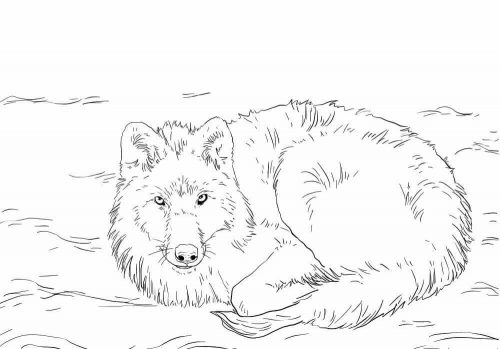



Native to the Queen Elizabeth Islands, arctic wolves are a smaller subspecies of the main wolf or gray wolf. They are also known as white wolves because of the regions where they live are white or arctic wolves.
-
The little wolf goes out for the first time:
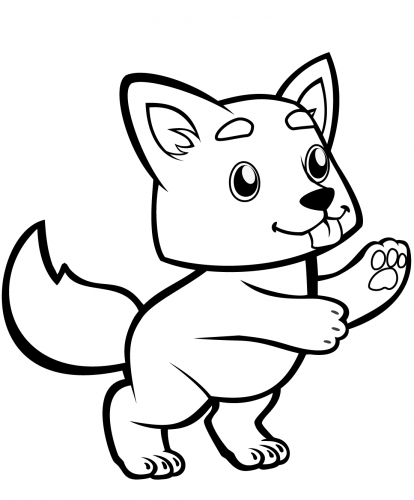



Did you know now that wolf cubs are actually born deaf and blind? Yes, it takes nine to twelve days for pups to start seeing. The mother wolf gives birth in the den, and the newborn pups venture out three weeks later, like this pup enjoying the outside world for the first time.
-
Wolf’s winter fur – it’s so fluffy:
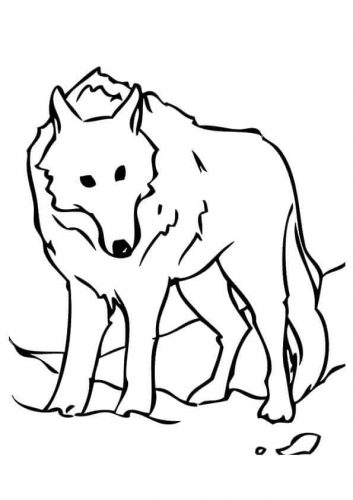



Wolves shed most of their undercoat and some of their rough guard hair in spring, growing them back in fall to prepare them for winter. Their thick, comfortable, fluffy winter fur keeps wolves cozy and warm in the open, even in temperatures as low as -40 degrees Celsius.
-
Gray Wolf – the largest canid:
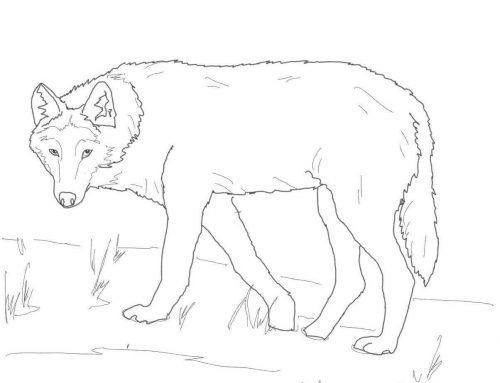



The wolf or gray wolf is the largest member of its family Canidae. They average around 40kg, with a particularly large species found in Alaska weighing almost 80kg.
-
Night wolf howling:
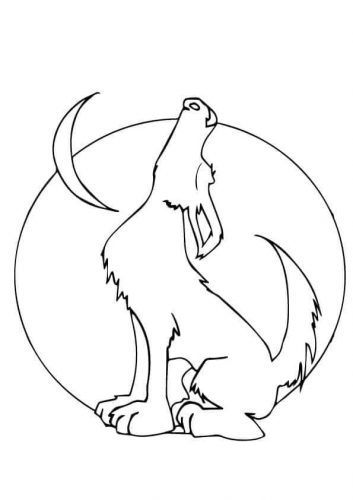



While there are many myths about wolves and their howls caused by the phases of the moon, the truth is that howling has nothing to do with the moon. They howl to communicate with each other in different situations, such as after a night of hunting, when their nest is in danger, to find each other, etc.
-
Maned wolf – neither fox nor wolf:




Much like the red fox, the maned wolf is neither a fox nor a wolf. The only species of the Chrysocyon genus, the maned wolf is found in central South America and is the continent’s largest canid.
-
pack of wolves:
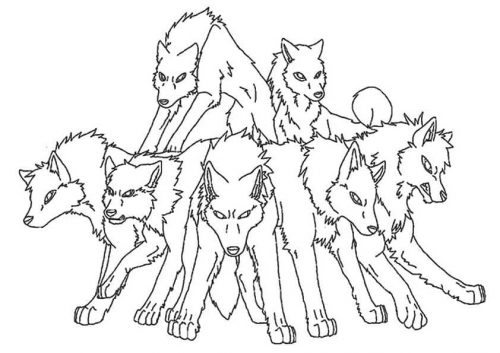



Wolves are pack animals, they form a pack or a unit consisting of a pair and its offspring, including young bars. A package consisting of several such units may be larger. Wolves are also very territorial and will fiercely defend their territory, as this pack does when intruders arrive.
-
Wolves and their funny pads:
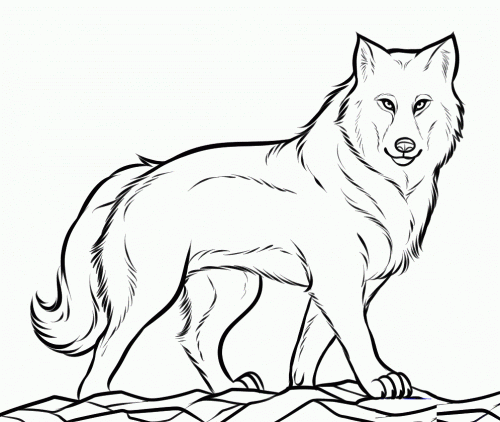



The wolf’s footpads have a special feature. Wolves are able to regulate the temperature of their foot pads independently of the rest of their body. It’s fun, isn’t it? In this way, they were able to keep the parts in contact with ice or snow at a temperature just above the freezing point of the tissue.
-
Wolf and Grapes:




Rewrite the old fable of “the fox and the grapes” and replace the fox with a wolf that tries to eat the grapes it can’t reach.
-
Incredibly detailed wolf head:
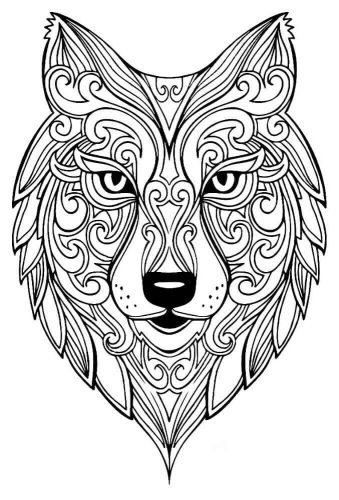



The wolf’s fur is longest around the shoulders and neck, almost forming a crown. You can also spot fine, long hairs forming tufts on their cheeks. The erect triangular ears have short, prominent hair.
-
Wolf Coloring Pages for Preschool Kids:
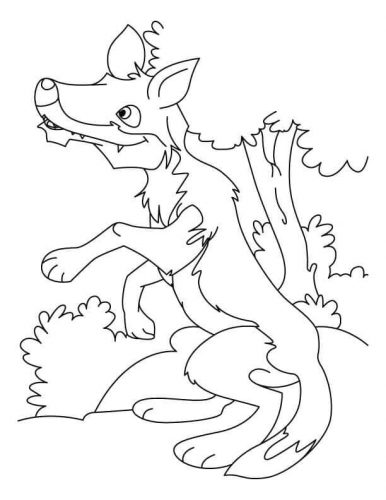



Following the detailed illustrations, here is a simple wolf drawing that all preschoolers can easily color.
-
Habitat of wolves:
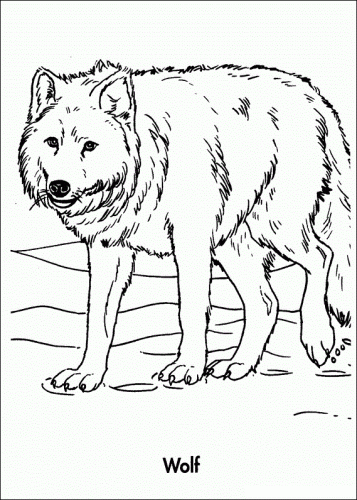



Wolves can survive in a variety of habitats from sea level to 3000 meters. They can be found in deserts and rocky mountain peaks, but can also thrive in areas such as forests and inland wetlands, as well as grasslands and pastures.
-
Wolf Fur Shades:
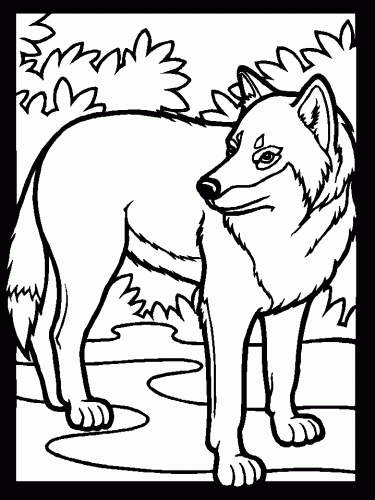



Depending on the habitat, the color of the wolf’s fur will vary, with more color at higher altitudes. As you have read before, arctic wolves are white in color and come in colors like cream, gray, black and more.
-
Mother wolf recovers and plays with her pups:
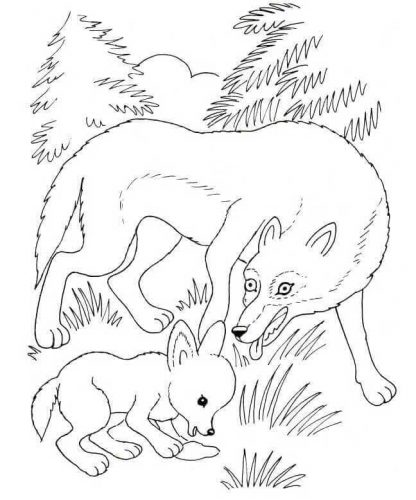



Female wolves remain in the den for at least a few weeks after the pups are born, recovering from the process. During this time, father wolf cares for them and their pups who start eating solid food around three to four weeks old. Here you can see mom finally fully recovered, coming out to play with her pup in the open.
-
The big bad wolf has an idea:




In the European folktale “Little Red Riding Hood,” a ravenous wolf finds a girl in a red hood in the forest trying to deliver food to her grandmother. After thinking about it for a long time, I had a flash of inspiration. He goes to the house first, eats the grandmother and pretends to be her so it can eat the girl when she comes.
-
The big head of the wolf:
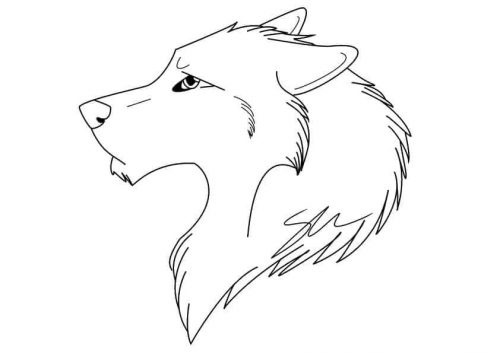



A wolf’s head is big and heavy. The forehead is broad, and the skull is about 11 inches long and nearly 6 inches wide. They have strong jaws with large, strong teeth.
-
2. Wolf Tattoo Designs:
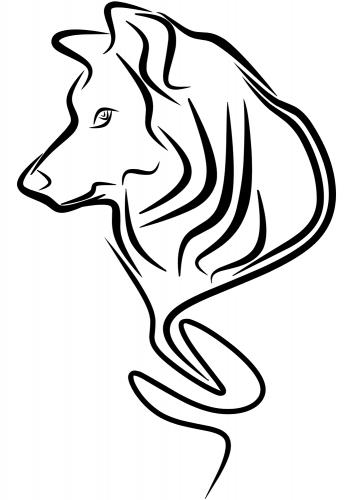



Tattoos are ink marks on the skin that can be temporary or permanent. Tattoos have existed from ancient cultural traditions to modern interpretations. Here is a wolf inspired tattoo design.
-
Big bad wolf with flowers:
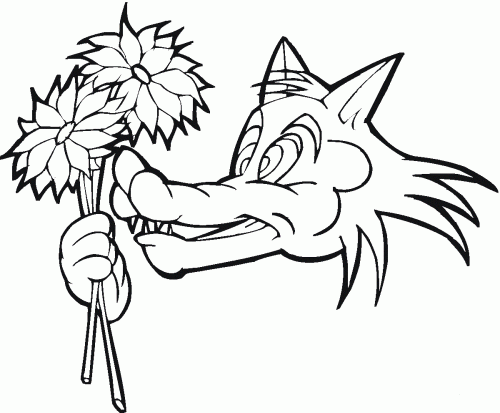



In Little Red Riding Hood, after the wolf finds the little girl, he has an idea. To delay her arrival, it told her to pick flowers for her grandmother. This gives the wolf time to get to the grandmother’s place and pretend to be the girl when she arrives.
-
Flying Wolf:
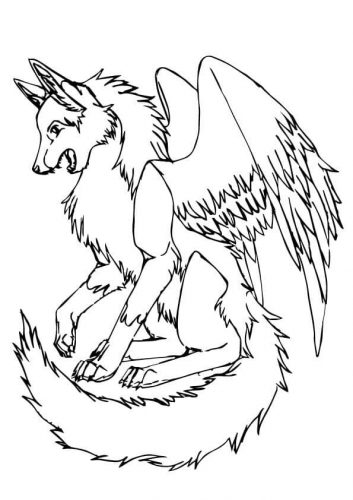



Winged wolves originated in Hungarian, German, and Russian folklore as varieties of winged wolves. Some species have wings similar to birds and others have wings like bats.
-
Wolf:
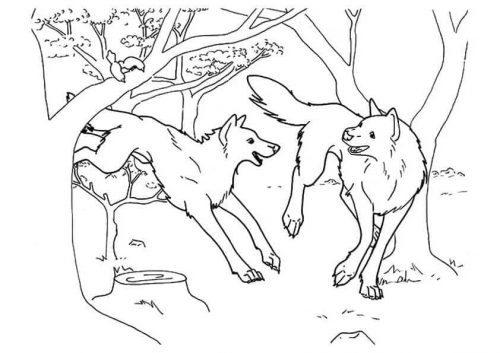



Wolves are highly adaptable by nature and can be found in a variety of environments throughout the Arctic – habitats found in the northern continents; wild in North America, Europe and Asia in Alaska, Canada and the northern United States.
-
The wolves protect Mowgli, he is family after all:
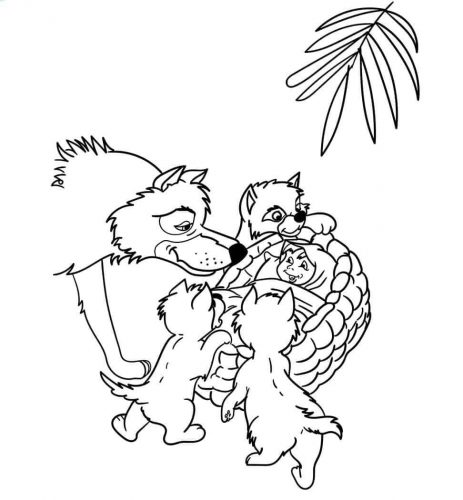



Raised among wolves, Mowgli is seen by wolves as part of the family in The Jungle Book. When Mowgli is threatened, the entire pack comes to his defense and keeps him from harm.
-
Female wolves and their pups:
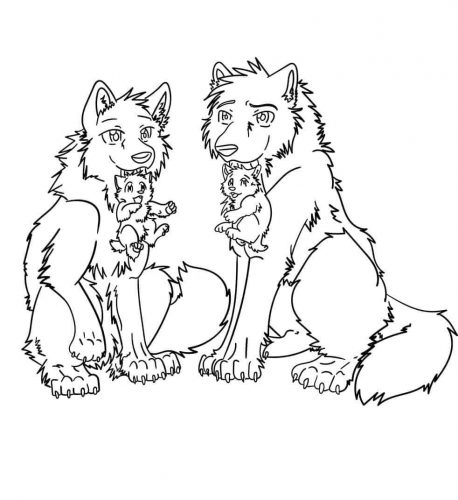



Wolves typically exhibit monogamous behavior and mate for life, working together as breadwinners. Female wolves are able to give birth once a year, with an average litter size of about 6 pubs. This illustration shows such a happy family of wolves, gently cuddling their maces as they are brought to their den.
With a happy note of family reunion, we’ve finished printing this fun collection of wolf coloring pictures. Although belonging to the same family, there are distinct differences between wolves, foxes, and other canids. You can browse through our earlier animal inspiration series to see the fox coloring pages and shark coloring pages. How about doing this fun activity with your friends? Each of you can create a specific set of coloring pages inspired by a particular animal. One can color a giraffe or an elephant series, the other can color a series about foxes, while you enjoy coloring this newest printable wolf coloring pages.


